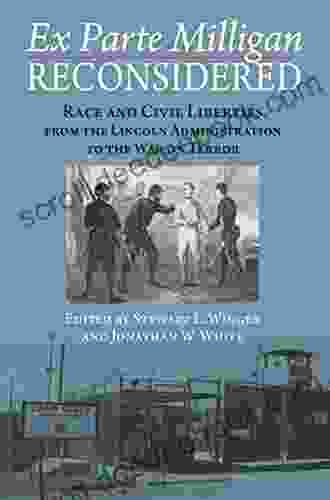The Sound of Music: Modern Acoustics and Signal Processing

The Sound of Music is one of the most iconic musicals of all time. Its timeless story, memorable songs, and stunning visuals have made it a beloved classic for generations.
4.5 out of 5
| Language | : | English |
| File size | : | 6711 KB |
| Text-to-Speech | : | Enabled |
| Screen Reader | : | Supported |
| Print length | : | 352 pages |
But what many people don't realize is that the musical's success is also due in part to its innovative use of modern acoustics and signal processing techniques.
In this article, we'll take a closer look at some of the specific techniques that were used to create the sound of The Sound of Music. We'll also explore how these techniques have influenced the development of modern musical theater sound design.
Acoustics of the Salzburg Festival Hall
The Sound of Music was originally performed at the Salzburg Festival Hall in Austria. This venue is known for its excellent acoustics, which helped to create the lush, resonant sound of the musical.
The hall's acoustics are due to a combination of factors, including its size, shape, and materials. The hall is relatively large, with a capacity of over 2,000 people. This gives the sound plenty of space to reverberate, creating a sense of grandeur and spaciousness.
The hall is also shaped in a way that helps to focus the sound. The walls are curved, and the ceiling is vaulted. This helps to direct the sound towards the audience, ensuring that everyone can hear the music clearly.
Finally, the hall is made of materials that absorb sound. This helps to reduce echo and reverberation, creating a more intimate and focused listening experience.
Signal Processing
In addition to the acoustics of the Salzburg Festival Hall, the sound of The Sound of Music was also shaped by the use of signal processing.
Signal processing is the use of electronic devices to modify the sound of a recording. These devices can be used to adjust the volume, EQ, and other aspects of the sound.
In the case of The Sound of Music, signal processing was used to create a number of different effects. For example, the opening scene of the musical features a choir singing in a reverberant hall. This effect was created by adding artificial reverb to the choir's recording.
Other scenes in the musical use signal processing to create a variety of other effects, such as echoes, delays, and distortions.
Influence on Modern Musical Theater Sound Design
The innovative use of acoustics and signal processing in The Sound of Music has had a major influence on the development of modern musical theater sound design.
Today, it is common for musical theater productions to use a variety of signal processing techniques to create a variety of effects. These techniques can be used to enhance the sound of the music, create atmosphere, and tell the story more effectively.
Some of the most common signal processing techniques used in musical theater today include:
- EQ: Used to adjust the balance of different frequencies in the sound.
- Compression: Used to reduce the dynamic range of the sound, making it louder and more consistent.
- Reverb: Used to create the illusion of space and depth.
- Delay: Used to create echoes and other time-based effects.
- Distortion: Used to add a sense of grit and intensity to the sound.
These techniques can be used to create a wide range of effects, from subtle enhancements to dramatic transformations. In the hands of a skilled sound designer, signal processing can be a powerful tool for telling stories and creating memorable experiences.
The Sound of Music is a timeless classic that continues to be enjoyed by audiences around the world. Its success is due in part to its innovative use of modern acoustics and signal processing techniques.
These techniques have helped to create the lush, resonant sound of the musical, and they have also influenced the development of modern musical theater sound design.
Today, signal processing is an essential tool for musical theater sound designers. It allows them to create a wide range of effects that can enhance the sound of the music, create atmosphere, and tell the story more effectively.
4.5 out of 5
| Language | : | English |
| File size | : | 6711 KB |
| Text-to-Speech | : | Enabled |
| Screen Reader | : | Supported |
| Print length | : | 352 pages |
Do you want to contribute by writing guest posts on this blog?
Please contact us and send us a resume of previous articles that you have written.
 Novel
Novel Page
Page Chapter
Chapter Text
Text Story
Story Library
Library E-book
E-book Magazine
Magazine Bookmark
Bookmark Glossary
Glossary Bibliography
Bibliography Foreword
Foreword Synopsis
Synopsis Annotation
Annotation Manuscript
Manuscript Scroll
Scroll Codex
Codex Tome
Tome Classics
Classics Library card
Library card Narrative
Narrative Biography
Biography Encyclopedia
Encyclopedia Thesaurus
Thesaurus Narrator
Narrator Character
Character Catalog
Catalog Card Catalog
Card Catalog Stacks
Stacks Periodicals
Periodicals Lending
Lending Reserve
Reserve Journals
Journals Rare Books
Rare Books Interlibrary
Interlibrary Literacy
Literacy Dissertation
Dissertation Reading List
Reading List Book Club
Book Club Textbooks
Textbooks Laura J Rosenthal
Laura J Rosenthal Carlos C Brochine Jr
Carlos C Brochine Jr Donatella Mutolo
Donatella Mutolo Michael J Sullivan
Michael J Sullivan Janet Asimov
Janet Asimov James Macdonald Lockhart
James Macdonald Lockhart Jennifer Williams
Jennifer Williams Seth G Jones
Seth G Jones Kim Moody
Kim Moody Amanda Wills
Amanda Wills Gerard Colby
Gerard Colby M C Chagla
M C Chagla Simon Garfield
Simon Garfield Peter Prange
Peter Prange Eric M Bailey
Eric M Bailey Nick Allen
Nick Allen George B N Ayittey
George B N Ayittey Sue Diaz
Sue Diaz David B Twilley
David B Twilley Marj Gurasich
Marj Gurasich
Light bulbAdvertise smarter! Our strategic ad space ensures maximum exposure. Reserve your spot today!
 Xavier BellFollow ·13.2k
Xavier BellFollow ·13.2k Stanley BellFollow ·2.6k
Stanley BellFollow ·2.6k Dwight BlairFollow ·2.2k
Dwight BlairFollow ·2.2k Nick TurnerFollow ·12.2k
Nick TurnerFollow ·12.2k Edmund HayesFollow ·18k
Edmund HayesFollow ·18k Jamie BellFollow ·10.3k
Jamie BellFollow ·10.3k Garrett BellFollow ·4.1k
Garrett BellFollow ·4.1k Clayton HayesFollow ·17.2k
Clayton HayesFollow ·17.2k

 Howard Powell
Howard PowellDk Workbooks Science Third Grade: An In-Depth Exploration...
Science education plays a...

 Everett Bell
Everett BellLearn to Play Bluegrass Dobro Guitar: A Comprehensive...
: Bluegrass Dobro, A Story of...

 Jeffrey Cox
Jeffrey CoxHow the Raccoon Got His Mask
The raccoon, with its...

 George Bell
George BellHannah Meets Ruby Hannah Out West: An Adventure-Filled...
Hannah Meets...
4.5 out of 5
| Language | : | English |
| File size | : | 6711 KB |
| Text-to-Speech | : | Enabled |
| Screen Reader | : | Supported |
| Print length | : | 352 pages |
















